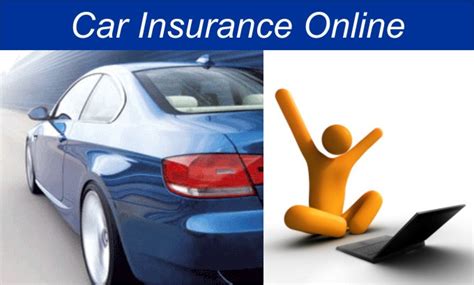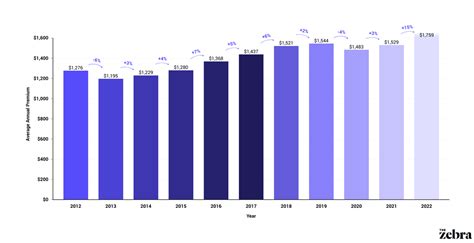Shopping For Car Insurance

When it comes to car insurance, making informed choices is crucial for ensuring the best coverage and value for your money. Navigating the complex world of insurance policies can be daunting, but with the right approach and understanding, you can secure a policy that meets your specific needs.
Understanding Car Insurance Basics

Car insurance is a contract between you and the insurance company, providing financial protection against potential vehicle-related losses. These losses can range from damage to your vehicle in an accident to liability claims if you cause harm to others or their property. Understanding the different components of a car insurance policy is essential for making informed decisions.
Liability Coverage
Liability coverage is a fundamental aspect of car insurance. It protects you financially if you’re found at fault in an accident, covering the costs of injuries and property damage you cause to others. This coverage is typically divided into two main categories: bodily injury liability and property damage liability.
Bodily injury liability covers the medical expenses, lost wages, and pain and suffering of individuals injured in an accident for which you are responsible. Property damage liability, on the other hand, covers the repair or replacement costs of damaged property, including other vehicles, fences, buildings, or any other property damaged in an accident you caused.
Comprehensive and Collision Coverage
While liability coverage is mandatory in most states, comprehensive and collision coverage are optional. However, they offer crucial protection for your vehicle.
Comprehensive coverage safeguards your vehicle against damages caused by non-collision events, such as theft, vandalism, natural disasters, or collisions with animals. Collision coverage, as the name suggests, covers the costs of repairing or replacing your vehicle after an accident, regardless of who is at fault.
Medical Payments and Personal Injury Protection
Medical payments (MedPay) and personal injury protection (PIP) are two additional coverages that can provide valuable benefits. MedPay covers the medical expenses of you and your passengers after an accident, regardless of fault. PIP goes a step further, covering not only medical expenses but also lost wages, funeral costs, and other related expenses.
Factors Affecting Car Insurance Rates

Car insurance rates are determined by a multitude of factors, each playing a role in assessing the risk associated with insuring a particular driver. By understanding these factors, you can make strategic choices to potentially lower your insurance costs.
Driver’s Age and Gender
Insurance companies consider age and gender when calculating rates. Statistically, younger drivers, particularly males under the age of 25, are often considered higher-risk, leading to higher insurance premiums. As drivers age and gain more experience, insurance rates typically decrease.
Driving Record and History
Your driving record is a significant factor in determining insurance rates. A clean driving record with no accidents or violations can result in lower premiums. Conversely, a history of accidents, especially those deemed your fault, or moving violations like speeding tickets can lead to higher insurance costs.
Some insurance companies offer discounts for completing defensive driving courses, which can help improve your driving skills and potentially reduce your insurance rates.
Vehicle Type and Usage
The type of vehicle you drive and how you use it can also impact your insurance rates. Sports cars and luxury vehicles often have higher insurance costs due to their higher repair and replacement costs. Additionally, the frequency and purpose of your vehicle usage can affect your rates. Commuting long distances daily or using your vehicle for business purposes may result in higher premiums compared to occasional recreational driving.
Location and Usage
Your geographic location plays a role in determining insurance rates. Areas with higher crime rates or a history of frequent accidents may have higher insurance costs. Similarly, the purpose of your vehicle usage can impact rates. If you primarily drive in urban areas with heavy traffic, your insurance costs may be higher than someone who primarily drives in rural areas with less traffic.
Tips for Finding the Best Car Insurance
Finding the best car insurance policy involves a combination of research, comparison, and understanding your specific needs. Here are some strategies to help you make an informed decision.
Compare Multiple Quotes
Obtain quotes from multiple insurance companies to compare coverage and rates. Online quote tools can provide a quick and convenient way to gather multiple quotes, allowing you to easily compare options. Consider using an insurance broker who can offer quotes from multiple companies, ensuring a more comprehensive comparison.
Understand Coverage Limits
When comparing quotes, pay close attention to the coverage limits. Higher coverage limits typically offer better protection but may result in higher premiums. Ensure that the coverage limits align with your needs and provide adequate financial protection in the event of an accident.
Explore Discounts and Bundle Options
Insurance companies often offer a range of discounts to attract customers. Common discounts include safe driver discounts, good student discounts, multi-policy discounts (for bundling car insurance with other policies like homeowners or renters insurance), and loyalty discounts for long-term customers. Inquire about these discounts and see if you qualify for any.
Consider Telematics Programs
Some insurance companies offer telematics programs, which use a device or an app to track your driving habits. These programs can offer personalized insurance rates based on your actual driving behavior. If you’re a safe and cautious driver, you may benefit from lower premiums through a telematics program.
Review Policy Terms and Conditions
Don’t just focus on the price; carefully review the policy’s terms and conditions. Pay attention to exclusions, deductibles, and any specific clauses that may impact your coverage. Understanding these details ensures that you’re getting the coverage you expect and need.
Customer Service and Claims Handling
Consider the insurance company’s reputation for customer service and claims handling. A company with a strong track record of prompt and fair claims processing can provide peace of mind. Check online reviews and ratings to get an idea of the company’s customer service and claims handling reputation.
Making an Informed Decision
Shopping for car insurance involves a thoughtful process of understanding your needs, comparing options, and making strategic choices. By researching and comparing multiple quotes, you can find a policy that offers the right balance of coverage and value. Remember, while price is an important factor, it’s not the only consideration. Ensuring you have adequate coverage to protect yourself and your assets is equally crucial.
Seek Professional Guidance
If you’re unsure about the best car insurance options for your specific situation, consider seeking advice from an insurance professional. An experienced agent can guide you through the process, explaining the nuances of different policies and helping you choose the one that aligns with your needs and budget.
Regularly Review and Update Your Policy
Car insurance needs can change over time. Regularly review your policy to ensure it still meets your requirements. Life events such as getting married, buying a new car, or moving to a different location may impact your insurance needs. Stay proactive and adjust your policy accordingly to maintain the right level of coverage.
Future Trends in Car Insurance
The car insurance industry is evolving, and future trends may impact how you shop for and utilize insurance policies. The rise of autonomous vehicles and advanced driver-assistance systems (ADAS) may lead to new types of coverage and pricing models. Additionally, the increasing adoption of telematics and usage-based insurance could provide more personalized and affordable insurance options.
| Insurance Type | Coverage Details |
|---|---|
| Liability Coverage | Protects against bodily injury and property damage claims |
| Comprehensive Coverage | Covers non-collision damages like theft, vandalism, and natural disasters |
| Collision Coverage | Covers repair or replacement costs after an accident, regardless of fault |
| Medical Payments (MedPay) | Covers medical expenses for you and your passengers after an accident |
| Personal Injury Protection (PIP) | Provides broader coverage, including medical expenses, lost wages, and funeral costs |

How do I choose the right car insurance coverage for my needs?
+
Choosing the right car insurance coverage involves assessing your specific needs and financial situation. Consider factors like your vehicle’s value, your driving habits, and the level of risk you’re comfortable assuming. Opt for a coverage level that provides adequate protection without excessive costs.
What are some common discounts offered by insurance companies?
+
Insurance companies often provide discounts for safe driving records, good student grades, multi-policy bundles, and loyalty. Additionally, some companies offer discounts for completing defensive driving courses or installing safety features in your vehicle.
How can I lower my car insurance rates?
+
To lower your car insurance rates, consider increasing your deductible, opting for higher coverage limits, and maintaining a clean driving record. You can also explore telematics programs, which offer personalized rates based on your driving habits. Additionally, regularly review your policy and explore bundle options to maximize potential savings.
What should I do if I’m involved in an accident?
+
If you’re involved in an accident, ensure your safety and the safety of others first. Then, exchange contact and insurance information with the other party involved. Take photos of the accident scene and any damage. Contact your insurance company promptly to report the accident and begin the claims process.



